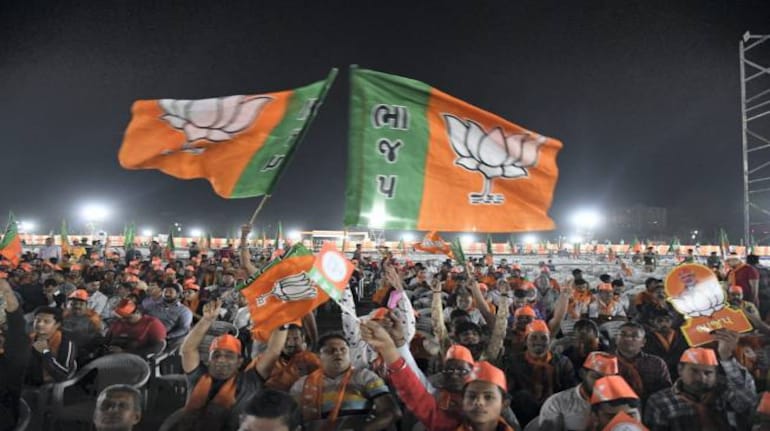



The politics of Bihar has one constant. It is that the state’s political turf is made only of the “social justice” plank. Since the ouster of the last Congress-led government in Bihar headed by Jagannath Mishra, the state has been a fertile ground for identity politics. So it may be a fitting tribute to the state’s politics that Bihar came out with the country’s first caste survey (since the Karnataka survey results are yet to be published).
The Bharatiya Janata Party (BJP) president Jagat Prakash Nadda called on veteran party leader from Bihar CP Thakur in Patna soon after the state government released the caste data of the survey, while the economic data is not yet released. While the meeting was largely seen as a courtesy call, Bihar’s political observers read the message that Nadda was seeking guidance from the BJP’s architect of social engineering in the state to counter the challenge posed by the caste survey outcomes and the consequent demand for a national level census to determine the actual strength of the backward castes.
Nadda was accompanied by the BJP’s Bihar unit chief Samrat Choudhary. His appointment was largely in anticipation of the saffron outfit bracing for the attempts of the Mahagathbandhan consisting of the JD (U), RJD, Congress, Left and others aiming for consolidation of the backward castes. Choudhary hails from Koeri caste, which according to the Bihar survey has a population of 4.2 percent. The Kurmis, the caste to which Bihar Chief Minister Nitish Kumar belongs, is pegged at 2.8 percent.
The BJP had recently drafted Lok Sabha MP Chirag Paswan into the National Democratic Alliance (NDA), even as the Lok Jan Shakti Party headed by his uncle Pashupati Kumar Paras, Union Minister, remains in the ruling alliance. Yet, the BJP leaders admit that the bid to revive its own staple of Mandal politics is a challenge. However, the party is not wholly unprepared and the task of reworking its social engineering arithmetic is certainly progressing apace.
Shedding Upper Caste Tag
In the 2020 Assembly election in Bihar that was fought in alliance with JD(U), 45 percent of BJP’s candidates hailed from the upper castes. The erstwhile alliance understanding as part of the social engineering of the BJP-JD(U) to counter the MY (Muslim-Yadav) combination of the RJD was to stitch a consolidation of the upper castes and non-Yadav backward votes. The BJP pulled strings with the upper castes and the JD(U) worked its extremely backward caste votebase to craft the winning mantra. But that is now history with the JD(U) quitting the NDA.
BJP strategists are brainstorming the possible ways to seize the caste pivot in Bihar, and the party may now certainly turn the 2020 assembly poll ticket distribution model on its head. The BJP is tempted to believe that the upper castes will now be polarised, as had been the case in the early 1990s in favour of the party, and it wouldn’t be counterproductive to bet aggressively on non-Yadav backward caste candidates. With Choudhary as party president in Bihar, the BJP has already given the message.
Capitalising On Social Faultlines
Even the leaders in JD(U) and RJD may not venture to say that the 63 percent backward caste population is one voting unit, for there has been social drifts among the constituents of the bloc because of several reasons, including economic. Yadavs, pegged at 14 percent of the population, are the most dominant backward caste in Bihar. This also applies to Uttar Pradesh.
The dominant numerical strength of a caste, as seen in Bihar and elsewhere, makes non-dominant castes look for opportunities elsewhere to gain socio-political relevance. The case in point here is the restlessness of Upendra Singh Kushwaha, and emergence of several caste groups such as the Mallahs, who seek political relevance by breaking ranks with the dominant caste-identified political party.
The BJP will be hoping to test its Haryana experiment of consolidating non-Jat backward castes in Bihar. While social justice plank remains a constant in Bihar, the claim of “Jungle Raj”, a term often used to slam the lawlessness of the 1990s in the state, is also a dominant political theme. The BJP is likely to draw strength from the success of its Haryana model and link it up with the existing socio-political apprehensions of the non-dominant castes to come into the reckoning against the ramifications of the caste census chorus.
Law & Order, Ram Mandir, The ‘Rohini’ Template
The BJP’s template to overwhelm the identity-based politics with the arrival of Narendra Modi at the helm was built around the credentials of better law and order administration (Uttar Pradesh), delivering on the Ram Mandir construction promise, while stoking aspirations of the lesser dominant backward castes by giving them ladders to further their political careers, as seen in a large number of MLAs in the party ranks from EBCs in UP.
The BJP has been reworking the Mayawati-led Bahujan Samaj Party’s social engineering strategy of stitching together a combination of the upper castes, EBCs, and Scheduled Castes with the holding string being the promise of better law and order (Mayawati at one time was even called the Iron Lady of UP).
The BJP can further fuel the aspirations of the non-dominant OBC castes by spotlighting or implementing the Rohini Commission Report on sub-categorisation of OBCs. Uttar Pradesh is bracing for the inauguration of the Ram Mandir, while the state has remained a fertile ground for both Mandal and Kamandal politics since 1990s unlike Bihar which remained wedded to social justice plank only.
Manish Anand is a senior Delhi-based journalist. Views are personal, and do not represent the stand of this publication.
Discover the latest Business News, Sensex, and Nifty updates. Obtain Personal Finance insights, tax queries, and expert opinions on Moneycontrol or download the Moneycontrol App to stay updated!
Find the best of Al News in one place, specially curated for you every weekend.
Stay on top of the latest tech trends and biggest startup news.